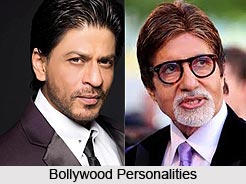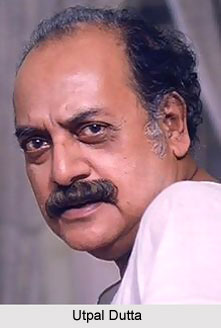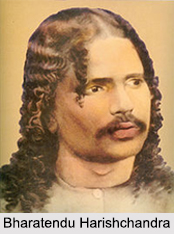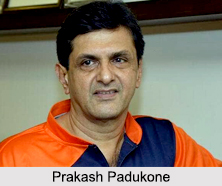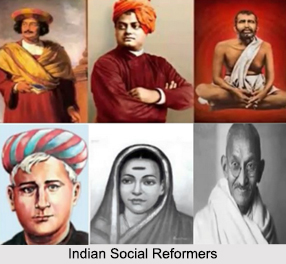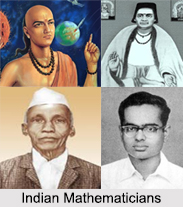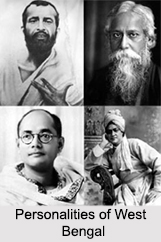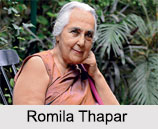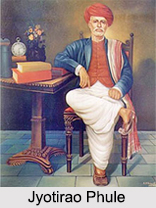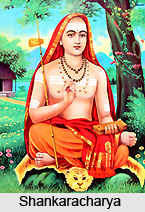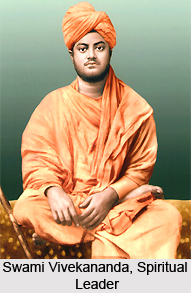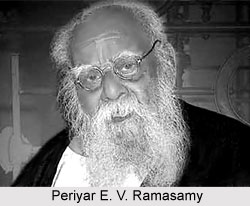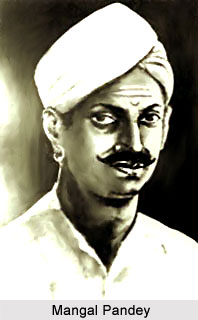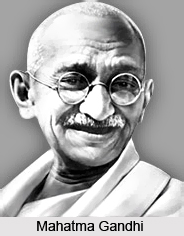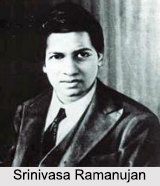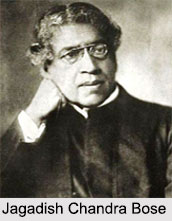Introduction
Indian Freedom Fighters had fought against the British Empire and continued the Indian freedom struggle with their undying spirit and bravery. The valorous Freedom Fighters of India sacrificed their lives to achieve independence for the nation.
The Indian freedom fighters faced several tortures, hardships and exploitations to earn national freedom. Independent India was the dream of each and every Indian who lived under the British rule in India. Every individual, during the British rule, fought in some or other way having a common aim of abolishing the British and various other colonial authorities ruling over different parts of India. A century of struggle, revolution, blood shedding, sacrifices and battles followed and finally India became independent on the 15th of August, 1947.
Contributions of Indian Freedom Fighters
India secured independence from the British rule but the nation lost a large number of men and women who possessed immense bravery and spirit of patriotism. These great people are honoured with the title of Freedom Fighters. The Indian Independence Movement was fuelled by the efforts of Indians who fought both physically and intellectually to secure political independence from the rule of the British, the Portuguese and the French. This involved a broad range of Indian political organisations, rebellions and individuals from 1857 -the year of sepoy mutiny to independence of India on 15th of August, 1947.
Famous Indian Freedom Fighters
Some of the famous Indian freedom fighters were Mangal Pandey, Rani of Jhansi, Tantia Tope and the famous leader Mahatma Gandhi who brought in the weapon of non-violence to fight against the enemy. Some of the other major freedom fighters of India include Lala Lajpat Rai, Annie Besant, Bal Gangadhar Tilak, Bipin Chandra Pal, Bhagat Singh, Sukhdev, Chandrashekhar Azad, Sarojini Naidu, Gopal Krishna Gokhale, Dadabhai Naoroji, Chakravarti Rajagopalachari, Sucheta Kriplani etc. There are a large number of women and men who fought relentlessly for the independence of India.
Lakshmi Bai
Lakshmi Bai or the Rani of Jhansi was the queen of the princely state of Jhansi, ruled by the Marathas. She was among the most prominent and leading figures in the 1857 rebellion, and was regarded as a symbol of resistance in India against the British rule. She is remembered in the history of India as a legend, the firebrand queen who commenced the Indian Revolution against the Colonialism of British.
Tantia Tope
One of the great freedom fighters during the regime of Rani Lakshmi Bai was Tantia Tope, who is considered to be a hero in the 1857 revolt. His name used to strike terror in the heart of English generals. Being cheated by his friend, Tatia Tope accepted death as a hero for his country.
Sardar Vallabhbhai Patel
Sardar Vallabhbhai Patel was one of the prominent freedom fighters of India and he also became the deputy Prime Minister of India after independence. The brave deeds of this person earned him the title of the ‘Iron Man of India.’ He was called Sardar after his active role in the Bardoli Satyagraha. He was a renowned lawyer but quit his practice to fight for India’s independence. As the deputy Prime Minister of India, Sardar Vallabhbhai Patel contributed significantly in India’s integration by the merging a number of princely states in the Indian Union.
Bal Gangadhar Tilak
A great freedom fighter and a firebrand leader, Bal Gangadhar Tilak (1856-1920) is remembered as a powerful force in India’s struggle for independence. In order to fight for the independence of India and to serve his fellow countrymen, Bal Gangadhar Tilak published newspapers and founded schools. He was famous in the country as one of the trios- Lal, Bal and Pal and the other two of this group were Lala Lajpat Rai and Bipin Chandra Pal. In the early part of the 20th century when the trend of Indian independence was mostly guided by Extremism, Tilak became the uncrowned king. Tilak was one of the first and strongest proponents of Swaraj and he was also considered as the father of Hindu Nationalism. Tilak was credited to be the first nationalist leader who sought close contact with the masses.
Bhagat Singh
Bhagat Singh was another famous freedom fighter of India. His name is linked with sacrifice, bravery, courage and vision. Singh was born in a Sikh family which was involved in revolutionary endeavors against the British. He was a prominent member of various revolutionary associations. Bhagat Singh became a symbol of heroism and inspiration after he sacrificed his life at the tender age of twenty-three. With other revolutionaries, he founded the Hindustan Socialist Republican Association in 1928. In order to caution the British of its misdeeds, he threw a bomb in the Central Legislative Assembly. By accepting death at the prime of his life, Bhagat Singh became an inspiration for other freedom fighters of that time who praised his courage and sacrifice.
Dadabhai Naoroji
Dadabhai Naoroji was an influential Indian political leader, scholar, writer, and merchant who left a lasting mark on both Indian and British public life. A founding member of the Indian National Congress, he served as its president three times—1886–87, 1893–94, and 1906–07, helping shape the early course of the nationalist movement. His career began in 1874 as the Diwan of Baroda, after which he moved to England to champion India’s cause before the British establishment. In 1892, Naoroji made history by being elected to the House of Commons as a Liberal Party MP for Finsbury Central, serving until 1895. He was the second person of Asian descent to enter the British Parliament, after David Ochterlony Dyce Sombre.
Chakravarti Rajagopalachari
Chakravarti Rajagopalachari, popularly known as Rajaji or C.R., and also referred to as Mootharignar Rajaji, was an Indian statesman, lawyer, writer, and freedom fighter. He holds the distinction of being the last Governor-General of India, as the office was abolished when India became a republic in 1950. He was also the only Indian-born leader to hold that post; all his predecessors had been British.
Over his long career, Rajagopalachari served in several key roles: leader of the Indian National Congress, Premier of the Madras Presidency, Governor of West Bengal, Union Home Minister, and Chief Minister of Madras State. He later founded the Swatantra Party, which became a significant voice of opposition in Indian politics. A recipient of the Bharat Ratna, India’s highest civilian honor, Rajaji was also known for his principled opposition to nuclear weapons and his advocacy of world peace and disarmament. Fondly nicknamed the “Mango of Salem,” he combined political acumen with intellectual depth, leaving a lasting imprint on India’s public life.
Sucheta Kripalani
Sucheta Kripalani was a pioneering Indian politician and freedom fighter who became the country’s first woman Chief Minister, leading the Uttar Pradesh government from 1963 to 1967. Like her contemporaries Aruna Asaf Ali and Usha Mehta, she took part in the Quit India Movement and was arrested by the British for her role in the struggle. During the turbulent Partition years, she worked closely with Mahatma Gandhi, even accompanying him to Noakhali in 1946 to help restore peace amid communal violence. A trailblazer in independent India’s political sphere, Kripalani was among the few women elected to the Constituent Assembly, where she served on the subcommittee that helped draft the Constitution.
On the eve of independence, 14 August 1947, she marked history by singing Vande Mataram in the Assembly just before Jawaharlal Nehru’s iconic “Tryst with Destiny” speech. Beyond her constitutional work, she was elected from Kanpur and went on to make history as the first woman Chief Minister of Uttar Pradesh. Earlier, in 1940, she had founded the All India Mahila Congress, underscoring her lifelong commitment to empowering women in politics and public life.
Ambikagiri Rai Choudhury
Ambikagiri Rai Choudhury was a renowned Assamese poet, lyricist, singer, prose writer, journalist, magazine editor, social worker, and a leading figure in India’s freedom struggle. Revered as Assam Kesari (the Lion of Assam), he combined literary brilliance with deep patriotism and activism.
A poet, playwright, and nationalist in equal measure, Rai Choudhury actively participated in the independence movement and was imprisoned by the British for his efforts. In 1950, he was elected president of the Asam Sahitya Sabha during its Margherita session, further cementing his stature as a cultural leader of Assam. He also founded the ‘Asom Songrokhini Sobhaa,’ reflecting his commitment to protecting Assamese identity and fostering social reform. Through both his writings and activism, Rai Choudhury left an enduring legacy as one of Assam’s most respected literary and political voices.
Tarun Ram Phukan
Tarun Ram Phukan, popularly known as ‘Deshbhakta,’ was a distinguished leader of Assam during British colonial rule. An influential political figure, he was an active member of the Assam Association until 1920 and later played a pivotal role in establishing the Assam branch of the Indian National Congress in 1921, becoming its first president.
Phukan emerged as a leading voice in the Non-Cooperation Movement, spreading Mahatma Gandhi’s message across Assam. His activism led to his arrest, and in 1921 he was sentenced to one year of rigorous imprisonment. In 1926, he presided as Chairman of the Reception Committee of the Pandu Session of the Indian National Congress. Beyond politics, Phukan contributed significantly to civic life, serving as Chairman of the Municipal Board and Local Board of Guwahati. He also championed social welfare initiatives, founding a leper asylum in Guwahati to aid the underprivileged.
Durgabai Deshmukh
Durgabai Deshmukh was an eminent Indian freedom fighter, lawyer, social worker, and politician. She played a significant role as a member of the Constituent Assembly of India and later served on the Planning Commission. A staunch advocate of women’s emancipation, she founded the Andhra Mahila Sabha (Andhra Women’s Conference) in 1937, which became a major platform for women’s education and empowerment. She also established and served as the first chairperson of the Central Social Welfare Board. In 1953, she married C.D. Deshmukh, the first Indian Governor of the Reserve Bank of India and Finance Minister in the Central Cabinet from 1950 to 1956.
Gopinath Bardoloi
Gopinath Bardoloi was an Indian freedom fighter and statesman who became the first Chief Minister of Assam, serving from 1946 until his death in 1950. A staunch advocate of Gandhian principles, he firmly believed in non-violence as a means of political struggle. He also chaired the North-East Frontier Tribal Areas and Assam Excluded and Partially Excluded Areas Sub-Committee, playing a crucial role in shaping policies for the region. Recognized for his selfless service and unwavering dedication to the people of Assam, then Governor Jayram Das Doulatram honored him with the title “Lokpriya”—meaning “loved by all.”
Badal Gupta
Badal Gupta was an Indian revolutionary remembered for his role in the daring attack on the Writers’ Building in Dalhousie Square, Calcutta, alongside Benoy Basu and Dinesh Gupta in December 1930. On 8 December, disguised in European attire, the trio entered the Secretariat Building and assassinated Colonel N.S. Simpson. A fierce exchange of gunfire followed as police retaliated, during which several officers, including Twynam, Prentice, and Nelson, were injured. When the revolutionaries were overpowered, they chose death over capture. Badal consumed potassium cyanide, while Benoy and Dinesh turned their revolvers on themselves. Badal died instantly, sacrificing his life at just 18 years of age.
Pulin Behari Das
Pulin Behari Das was an Indian revolutionary and the founding president of the Dhaka Anushilan Samiti. In September 1906, when Bipin Chandra Pal and Pramatha Nath Mitra toured the newly created province of Eastern Bengal and Assam, Mitra called upon those willing to sacrifice their lives for the nation. Pulin stepped forward, and soon after, he was entrusted with organizing the Dhaka chapter of the Anushilan Samiti. By October of the same year, he had established the branch with 80 young recruits.
A gifted organizer, Pulin quickly expanded the Samiti’s influence, building a network of over 500 branches across the province. He also founded the National School in Dhaka, which served as a training ground for revolutionaries. Students initially practiced with lathis and wooden swords, before advancing to daggers, pistols, and revolvers.
In early 1908, he organized the daring Barrah Dacoity, carried out in broad daylight at the residence of the zamindar of Barrah in Dhaka district. The funds from this raid were used to procure arms and ammunition. Later that year, Pulin was arrested alongside Bhupesh Chandra Nag, Shyam Sundar Chakravarti, Krishna Kumar Mitra, Subodh Mallick, and Ashwini Dutta, and imprisoned in Montgomery Jail. Released in 1910, Pulin resumed revolutionary activities with renewed vigor. By this time, the Dhaka group had begun operating independently of the Kolkata faction, and following the death of Pramatha Nath Mitra, the two branches formally parted ways.
Ullaskar Dutta:
Ullaskar Dutta was an Indian revolutionary linked with the Anushilan Samiti and the Jugantar group of Bengal, and a close associate of Barindra Ghosh. Initially serving as the principal bomb-maker of Jugantar, he played a pivotal role until Hemchandra Kanungo returned from Paris with advanced knowledge of political theory and explosives. A skilled craftsman in bomb-making, Ullaskar collaborated with Hem Chandra Das to produce explosives, one of which was used by Khudiram Bose in the attempted assassination of magistrate Kingsford. The plot, however, led to a major crackdown on the Jugantar network, resulting in the arrest of several of its members, including Ullaskar Dutta, Barindra Ghosh, and Khudiram Bose.
Sister Nivedita
Sister Nivedita, born Margaret Elizabeth Noble, was an Irish teacher, author, social activist, and devoted disciple of Swami Vivekananda. Her life took a new direction in 1895 when she met Swami Vivekananda in London. Inspired by his vision, she travelled to Calcutta (now Kolkata) in 1898. On 25 March that year, Vivekananda initiated her into the vow of Brahmacharya, giving her the name Nivedita, meaning “Dedicated to God.”
In November 1898, she founded a girls’ school in Bagbazar, North Calcutta, with the mission of providing education to underprivileged girls. A year later, during the plague epidemic in Calcutta, she selflessly nursed and cared for the poor and afflicted. Nivedita also maintained close ties with the newly established Ramakrishna Mission. However, her active involvement in the Indian nationalist movement eventually compelled her to formally distance herself from the Mission under Swami Brahmananda’s leadership.
Birsa Munda
Birsa Munda was a tribal freedom fighter and folk hero from the Munda community, remembered for spearheading a powerful tribal religious and socio-political movement against British rule in the late 19th century. Emerging in the Bengal Presidency (present-day Jharkhand), his struggle became a defining chapter in India’s independence movement, particularly across the Munda belt of Khunti, Tamar, Sarwada, and Bandgaon.
After leaving school, Birsa founded a new faith known as Birsait, which quickly gained followers from the Munda community. The movement posed a direct challenge to both colonial authorities and Christian missionaries, as Birsaits openly declared that their true enemy was British rule, not fellow Christian tribesmen. The uprising, rooted in resistance to exploitative land-grabbing practices by colonial officials and local landlords, sought to protect the traditional tribal land system. Birsa Munda became a symbol of defiance, uniting Munda and Oraon communities against oppression and missionary-led conversions.
Sidhu and Kanhu Murmu
Sidhu and Kanhu Murmu, two brothers, were prominent tribal leaders who spearheaded the historic Santhal Rebellion of 1855. The uprising, which spread across present-day Jharkhand and parts of Bengal, including Purulia, Birbhum, and Bankura, was a powerful resistance movement against British colonial rule and the exploitative zamindari system.
On 30 June 1855, Sidhu and Kanhu, alongside fellow leaders Chand and Bairab, mobilized nearly 10,000 Santals and declared open rebellion. In the early stages, the Santals achieved some success. However, the British soon devised a brutal strategy to draw them out of the forests. In a decisive battle, British troops, equipped with modern firearms and even war elephants, lured the Santals into charging by initially firing blank rounds. Believing the enemy’s weapons to be harmless, the Santals advanced with full force, only to be met with devastating gunfire when the British switched to live ammunition. Though the rebellion was eventually crushed, it left a deep impact on colonial policies.
Basanti Devi
Basanti Devi was a prominent Indian independence activist during British rule and the wife of nationalist leader Chittaranjan Das. Following Das’s arrest in 1921 and his death in 1925, she emerged as an influential figure in the freedom struggle, actively participating in political and social movements. Even after independence, she remained dedicated to social work. In recognition of her lifelong contributions, she was honored with the Padma Vibhushan in 1973.
Ram Prasad Bismil
Ram Prasad Bismil was an Indian poet, writer, translator, and revolutionary who played a pivotal role in the struggle against British rule. He took part in both the Mainpuri Conspiracy of 1918 and the Kakori Conspiracy of 1925. Writing in Hindi and Urdu, he used several pen names—Ram, Agyat, and most famously Bismil, by which he became widely known. Though often referred to as “Pandit,” the title was an honorific acknowledging his deep knowledge across various subjects.
Deeply influenced by the Arya Samaj, Bismil emerged as one of the founding members of the Hindustan Republican Association, a revolutionary organization committed to armed resistance against colonial rule. His literary contributions, coupled with his fearless activism, made him a symbol of both intellectual and revolutionary zeal. On 19 December 1927, Ram Prasad Bismil was executed by the British for his role in the freedom struggle, leaving behind a legacy of courage, sacrifice, and patriotic inspiration.
Anugrah Narayan Sinha
Anugrah Narayan Sinha, fondly remembered as Bihar Vibhuti, was a distinguished nationalist leader, Gandhian, and one of the chief architects of modern Bihar. He actively participated in the Champaran Satyagraha and became a trusted associate of Mahatma Gandhi during the freedom struggle. Following independence, he served as the first Deputy Chief Minister and Finance Minister of Bihar from 1946 to 1957, playing a central role in shaping the state’s governance and development. As a member of the Constituent Assembly of India, he contributed to the framing of the nation’s Constitution and later served in independent India’s first Parliament.
Sri Krishna Sinha
Sri Krishna Sinha, popularly known as Shri Babu, was the first Chief Minister of Bihar, serving from 1946 until his death in 1961, with only a brief interruption during World War II. A stalwart of the freedom movement and a prominent Congress leader, he played a decisive role in shaping modern Bihar. Sinha is remembered as the first Chief Minister in India to abolish the zamindari system, a landmark reform that transformed agrarian relations in the state. He also led the historic movement that enabled Dalit entry into the Baidyanath Dham temple at Deoghar, striking a powerful blow against caste discrimination. Over the course of the independence struggle, he spent nearly eight years in British prisons, emerging as a fearless leader and mass mobilizer. Celebrated for his fiery oratory, which earned him the title Bihar Kesari (Lion of Bihar), Sinha inspired thousands with his “lionlike roars” at public gatherings.
Yamuna Karjee
Yamuna Karjee, born in 1900 in Deopar near Pusa in Bihar’s Samastipur district, came from a Bhumihar farming family. His father, Anu Karjee, passed away when Yamuna was just six months old, leaving behind a life of hardship that would deeply shape his outlook. From his school days, Karjee was drawn to India’s freedom struggle, particularly the Kisan and peasant movements led by Sahajanand Saraswati. His commitment to the cause soon brought him into close association with leading peasant revolutionaries such as Karyanand Sharma, Yadunandan Sharma, and Panchanan Sharma. Together, they worked to mobilize farmers and challenge the oppressive agrarian structures under colonial rule.
Kunwar Singh
Kunwar Singh was one of the most important freedom fighters in the Sepoy Mutiny of 1857. Kunwar Singh was born in Jagdishpur in the Shahabad (now in Bhojpur District) of Bihar.
Mahavir Tyagi
Mahavir Tyagi was a noted Indian freedom fighter and parliamentarian from Dehradun, in present-day Uttarakhand. Educated in Meerut, Uttar Pradesh, he initially served in the British Indian Army and was posted in Persia. However, the Jallianwala Bagh Massacre of 13 April 1919 deeply shook him, prompting his resignation in protest. He was later court-martialed in Quetta, stripped of his pay and benefits, and expelled from Baluchistan.
Returning home, Tyagi became a devoted follower of Mahatma Gandhi and threw himself into the national movement. A lifelong member of the Indian National Congress, he was especially active in the Kisan (peasant) movement and worked extensively in the western United Provinces. For his activism and defiance against colonial authority, he was imprisoned by the British on eleven separate occasions.
Jagjivan Ram
Jagjivan Ram, popularly known as Babuji, was a prominent independence activist and statesman who went on to become one of the most enduring figures in post-independence Indian politics. Over a career spanning more than three decades, he held multiple key portfolios, making him the longest-serving Union Cabinet minister in the country’s history.
In 1979, he briefly served as India’s Deputy Prime Minister, but his contributions stretched far beyond political titles. As Defence Minister, he played a crucial role during the Indo-Pak War of 1971, overseeing India’s military triumph and the creation of Bangladesh. Earlier, as Union Agriculture Minister in two separate terms, he was instrumental in driving the Green Revolution and modernizing Indian agriculture, particularly during the severe food crisis of 1974, when his leadership proved vital in averting famine.
Vasudeo Balwant Phadke
Vasudeo
Balwant Phadke was a pioneering Indian revolutionary and independence
activist who dedicated his life to freeing India from colonial rule. Deeply
moved by the hardships faced by farmers, he believed that Swaraj (self-rule)
was the only solution to their suffering. Rallying support from different
sub-communities within Hindu society, he organized a movement to challenge
British authority.
Phadke and his group resorted to armed resistance, funding their struggle through raids on wealthy European businessmen. His boldness came to the forefront when, in a daring surprise attack, he briefly captured control of Pune, catching colonial forces off-guard. Remembered as one of the earliest revolutionaries of India’s freedom movement, Phadke’s actions inspired later generations to take up the cause of independence.
Rashbehari Bose
Rash
Behari Bose was one of the great revolutionaries of the first half of
the 20th century. He was born in Subaldaha village of Bardhaman district. He had completed his
education in Chandannagar. He had left Bengal as he was not supporting the
Alipore bomb case. Thereafter he went to Dehradun where through Amarendra
Chatterjee of Jugantar he was in touch with the revolutionaries of Bengal.
Through Jatindra Nath, one of the earliest political disciples of Aurobindo
Ghosh he came across several well known revolutionaries of Arya
Samaj in Uttar Pradesh and Punjab.
Khudiram Bose
Khudiram Bose was one of those young
revolutionaries and freedom fighters whose deeds of bravery and sacrifice have
become the subject of many a folk lore. He was one of those brave men who
challenged the British rule in their own style. At the age of nineteen, he
became a martyr. Vande Mataram has been his core
philosophy throughout his life. He showed the guts to devote his soul to the
war of Independence.
Usha Mehta
Usha
Mehta was a devoted Gandhian and a prominent figure in India’s
independence movement. She is best remembered for establishing the Congress
Radio—also known as the Secret Congress Radio—an underground broadcasting
station that operated for a few months during the Quit India Movement of 1942,
spreading uncensored news and inspiring freedom fighters across the country. In
recognition of her unwavering dedication to the nation, the Government of India
honored her with the Padma Vibhushan, the country’s second-highest civilian
award, in 1998.
Rajkumari Amrit Kaur
Rajkumari
Amrit Kaur was a pioneering Indian activist and politician who played a
significant role in shaping independent India. A close associate of the freedom
movement, she became the first woman to serve as a minister in the central
government when she was appointed the nation’s first Health Minister in 1947, a
position she held for a decade, making her the longest-serving in that role.
During her tenure, she championed several healthcare reforms and worked tirelessly to improve public health systems across the country. She also briefly held the portfolios of Sports and Urban Development, and was instrumental in establishing the National Institute of Sports in Patiala. Beyond her ministerial contributions, Kaur was a strong advocate for women’s rights and a member of the Constituent Assembly of India, which framed the Constitution.
Muthulaksmi Reddy
Muthulaksmi
Reddy was an Indian physician, pioneering social reformer, and
recipient of the Padma Bhushan. In 1926, she became the first woman appointed
to the Madras Legislative Council, a milestone that marked the beginning of her
lifelong mission to “correct the balance for women” by fighting social
injustices and advocating for equality in moral standards. Graduating in 1912
with several gold medals to her credit, Reddy was among the first women doctors
in India. Deeply influenced by Annie Besant and later Mahatma Gandhi, she
dedicated her life to public service and women’s empowerment. Her legacy was
also honored in 1947, when her name was included on the first national flag
hoisted at the Red Fort.
Aruna Asaf Ali
Aruna
Asaf Ali was an Indian educator, political activist, and publisher who
played a prominent role in the country’s freedom struggle. She is best
remembered for hoisting the Indian National Flag at the Gowalia Tank Maidan in
Bombay during the Quit India Movement of 1942, a defining act of defiance
against British rule. Earlier, in 1932, she was imprisoned in Tihar Jail, where
she launched a hunger strike to protest the harsh treatment of political
prisoners. Her protest forced improvements in prison conditions, though she was
later transferred to Ambala and kept in solitary confinement. After her
release, she remained relatively quiet for a time, but by the end of 1942, she
reemerged as a key figure in the underground resistance. Following
independence, Aruna Asaf Ali continued her public service and went on to become
the first Mayor of Delhi, leaving a lasting imprint on Indian politics.
Ashfaqulla Khan
Another famous firebrand and young revolutionary of India was Ashfaqulla Khan
who sacrificed his life for his motherland. A prominent member of the Hindustan
Republican Association, Ashfaqulla Khan, and his associates carried on
the Kakori train robbery and was thus hanged
to death by the British.
Kasturba Gandhi
Kasturba
Gandhi was an Indian political activist who actively participated in
the country’s struggle for independence during British rule. She was the wife
and close companion of Mohandas Karamchand Gandhi, popularly known as Mahatma
Gandhi, and stood by his side in numerous movements and campaigns. In
recognition of her legacy, India observes National Safe Motherhood Day every
year on April 11, her birth anniversary.
Acharya
Narendra Deva (30 October 1889 – 19 February 1956) was a prominent
thinker and one of the foremost leaders of the Congress Socialist Party in
India. A firm believer in democratic socialism, he rejected violence on
principle and instead embraced satyagraha as a powerful tool of revolutionary
change. His political awakening began around 1915, influenced by B. G. Tilak
and Aurobindo Ghosh.
Alongside his role as a teacher, Deva developed a deep interest in Marxism and Buddhism, which shaped much of his intellectual outlook. He also took an active part in the Hindi language movement. From the founding of the Congress Socialist Party in 1934, he played a central leadership role and faced repeated imprisonment during India’s freedom struggle. Deva also served as a member of the Uttar Pradesh Legislative Assembly at different times.
Bhikaji Cama
Another name in the list of Indian freedom fighters is Madam Bhikaji Cama. She was among the famous women Indian freedom fighters who advocated for the cause of the freedom movement outside India. She had the honour of unfurling the flag of India at an international assembly. Madame Cama abandoned a luxurious life and lived in exile in order to serve her motherland.
Ram Prasad Bismil
A well-known young revolutionary by the name of Ram Prasad Bismil sacrificed his life for his motherland. He was a member of the Hindustan Republican Association and was a crucial member of the group which had a hand in the Kakori train dacoity.
Jatin Banerjee
The famous Jatin Banerjee, who was well-known as Bagha Jatin due to his courage and bravery, was also one of the freedom fighters of India. He name is often associated with another famous freedom fighter of the time name Aurobindo Ghosh (Sri Aurobindo), who dramatically rose to prominence between 1871 and 1910.
Maulana Abul Kalam Azad
Maulana Abul Kalam Azad, born on
November 11, 1888 in Mecca, was a great freedom fighter and also an
active member of the Indian National congress. He
participated in almost all the major movements in India. Maulana Abul Kalam
Azad presided over the special Congress session in the month of September 1923
and at the age of 35 years; he became the youngest person to get elected as the
President of the Congress.
The original name of Maulana Abul Kalam Azad was Abul Kalam Ghulam Muhiyuddin. His ancestors came to India from Afghanistan. His mother was an Arab and his father Maulana Khairuddin, was a Bengali Muslim of Afghan origin. Maulana Khairuddin shifted to Mecca in 1857. He returned to India in 1890 and started living in Calcutta. His mother died when he was only 11 years old. Initially Maulana Abul Kalam Azad received the traditional Islamic education at home. After that he was taught Arabic, Persian, philosophy, geometry, mathematics and algebra by some great teachers. He also acquired huge knowledge in English, history, politics and general science.
Gopal Krishna Gokhale
Another famous freedom fighter of India was Gopal Krishna Gokhale. He was also a part of the Indian National Congress. He was regarded as the political Guru of the great Indian leader, Mahatma Gandhi. At Varanasi, in the year 1905, Gokhale presided over annual session of Indian National Congress. He opposed the entry of extremists in the Congress party.
Purushottam Das Tandon
He was also a famous freedom fighter of India who hailed from the state
of Uttar Pradesh. He was of the Punjabi Khatri
descent. This person is remembered widely for his contribution towards making
Hindi as the official language of India. Purushottam Das Tandon was revered as
Rajarshi. After getting a Law degree and an MA in history, he started to
practice in the year 1906, and joined the bar of Allahabad High
Court in the year 1908 as Tej
Bahadur Sapru`s junior. In order to concentrate on public activity, he
left practicing law in the year 1921.
Dr. Hakim Ajmal Khan
He was one of the renowned freedom fighters of India, famous physician and a
well-known educationalist. He founded the Jamia Millia Islamia in Delhi. Dr.
Hakim Ajmal Khan studied the Holy
Quran and traditional Islamic knowledge, before studying medicine.
Jayaprakash Narayan
Another notable freedom fighter of India was Jayaprakash Narayan. He was famously called JP. He was among the very few modern Indian leaders who worked hard for independence and also participated in Indian politics actively for a long time after India secured independence. Jayaprakash Narayan is especially known for leading the opposition to Indira Gandhi in the 1970s and for giving a call for peaceful Total Revolution He was arrested in the year 1930, and was imprisoned for some weeks since he organized a Salt March being inspired by the earlier actions of Mahatma Gandhi. His nationalist friend and an eminent writer of Hindi literature Ramavriksha Benipuri wrote a biography on Jayaprakash Narayan.
Vinayak Damodar Savarkar
Vinayak Damodar Savarkar was a prominent freedom fighter and a Hindu nationalist leader of India. He was also called Veer Savarkar. He was a good writer, poet, orator, a historian, philosopher and also a renowned social worker who dedicated his whole life in fighting for India’s Independence. Savarkar is considered to be a great revolutionary by some whereas some term him as a Machiavellian manipulator and a communalist. “First war of Indian Independence Movement: 1857,” written by Veer Savarkar was a great inspiration for several freedom fighters.
Bipin Chandra Pal
Bipin Chandra Pal began the Vande
Mataram journal. He was among the three Extremist Indian patriots of the
Indian National Congress who gave away his life fighting for the Independence
of India. The other two of the trilogy were Bal Gangadhar Tilak and Lala Lajpat Rai and together, the three
were called Lal-Bal-Pal. Bipin Chandra pal was jailed for six months since he
refused to provide evidence against Aurobindo
Ghose in the sedition case of Vande Mataram.
Mangal Pandey
Mangal Pandey is considered as one of the
first Indian freedom fighters and was
a Sepoy to rise against the British rule during the Great
revolt of 1857. He was a sepoy in the 34th Regiment of the Bengal
Native Infantry (BNI) of the British East India Company. Mangal
Pandey is well known in the arena of Indian history as he attacked his British
officers, sparking off the First War of Indian Independence or as the British
termed it, the Sepoy Mutiny of 1857. Mangal Pandey
perhaps played the most vital role in the Indian freedom struggle. Some
scholars also call him an accidental hero. Mangal Pandey at the age of 22
entered the British East India Company Bengal
Army in 1849. The role of Mangal Pandey in the British regiment was that of a
sepoy (soldier) in the 34th Regiment of the Bengal Native Infantry (BNI). He
was a tall lad, lean and well built. Mangal was part of the 5th Company of the
34th BNI regiment, famously acknowledged as fearsome attacking officers. The
Company is known to have contributed immensely in what came to be known as
the Sepoy Mutiny and the Great Revolt of 1857.
Annie Besant
Annie
Besant was an English socialist, theosophist, freemason, women’s rights
advocate, educationist, and a prominent campaigner for Indian nationalism. A
passionate supporter of both Irish and Indian self-rule, she made history in
1917 by becoming the first woman to preside over the Indian National Congress.
Her public life began in Britain, where she emerged as a leading voice for the
National Secular Society and a close associate of Charles Bradlaugh. In 1877,
the two-faced prosecution for publishing a birth control pamphlet by Charles
Knowlton. Besant soon became deeply involved in labor struggles, notably the
“Bloody Sunday” demonstration and the London matchgirls’ strike of 1888.
Her political journey in India saw her join the Indian National Congress and, during World War I, establish the Home Rule League to press for democracy and dominion status for India within the British Empire. This movement propelled her to the presidency of the Congress in late 1917, cementing her role as a central figure in India’s nationalist politics. Even in her later years, she remained active in advancing both Indian independence and theosophy, causes she championed until her death in 1933.
Sukhdev Thapar
Sukhdev Thapar was a revolutionary freedom fighter who played a key role in India’s struggle against British colonial rule. A prominent member of the Hindustan Socialist Republican Association (HSRA) and the Naujawan Bharat Sabha, he was deeply involved in organizing revolutionary activities in Punjab and across northern India. As the head of the HSRA’s Punjab unit, he was instrumental in shaping strategies and decisions for the movement.
Sukhdev participated in several landmark events, including the historic prison hunger strike of 1929, and became a central figure in the Lahore Conspiracy Case (1929–1930), officially titled Crown versus Sukhdev and Others. He was the main accused in the case, which brought him into the spotlight of India’s revolutionary struggle. On 23 March 1931, Sukhdev, along with Bhagat Singh and Shivaram Rajguru, was executed at Lahore Central Jail. Their bodies were secretly cremated on the banks of the Sutlej River, an event that turned the three into enduring symbols of courage and sacrifice in India’s fight for independence.
Surya Sen
Surya Sen was
born on 22 March 1894 in Chittagong. He as a revolutionary took part in non-cooperation
movement. A commemorative stamp was released on him in 1977 by the Government
of India. Surya Sen was a teacher by profession. One of his teachers
had initiated into revolutionary ideas in the year 1916 when he was studying in
the Chittagong College. Thereafter he joined the revolutionary group Anushilan.
In 1929, he became the president of the Chittagong district committee of the
Indian National Congress.
He became a teacher of the National school in Nandankanan and later joined the Umatara School at Chandanpura. He initiated a secret warfare against the colonial Government. One of his successful happenings was a robbery at the treasury office of the Bengal Assam Railway at Chittagong on December 23, 1923. The Chittagong Armoury Raid that was done on April 18, 1930 was his major success. Thereafter he marched to Jalalabad hills along with his fellow revolutionaries and post battle with the British troops, he escaped from there.
Barindra Kumar Ghose
Barindra Kumar Ghose was the youngest son of Dr.Krishnadhan Ghose, renowned physician and a reputed district surgeon and Swarnalata Ghose, daughter to famous Brahmo religious and social reformer Rajnarayan Basu. Monmohan Ghosh, scholar of English literature, a poet and professor of English at Presidency College, Calcutta and at Dacca University, was Barindra`s second elder brother and his third elder brother was the national activist, revolutionary and spiritualist, Shri Aurobindo Ghose.
Prafulla Chaki
Prafulla
Chaki was born on December 10, 1888 in Bogra district. When he joined
Rangpur National School he came in contact with revolutionaries like
Jitendranarayan Roy, Abinash Chakravarti, Ishan Chandra Chakravarti. This led
him to practicing of the revolutionary philosophies.
Dr B R Ambedkar
Dr
B R Ambedkar had immense contribution in the shaping modern India. He
led millions of oppressed, to a life of self-respect, dignity, and
responsibility. Babasaheb, as he was also known as, always stressed the
importance of better education, so that position of common people in society
can be improved. It was he, who was primarily responsible for the formulation
of Constitution - adopted after India became independent. Babasaheb began the
revival of Buddhism in
India that has grown tremendously after his death, and continues to grow today
among his countless followers.
He was a veritable phenomenon of the 20th century. Dr. Bhimrao Ramji Ambedkar, was chiefly responsible for drafting of The Constitution of India. He was the first Law Minister of India. On the 14th October, 1956, Babasaheb Ambedkar embraced Buddhism. He continued the crusade for social revolution until the end of his life on the 6th December 1956. He was honoured with the highest national honour, `Bharat Ratna` in April 1990. B.R Ambedkar was affectionately called Baba Saheb Ambedkar.
Homi Modi
Homi Modi
was born on 23rd September, 1881.He graduated from the prestigious St. Xavier`s
College in Bombay. He also obtained M A and a degree in Law. He was the member
of legislative Assembly from 1929 to1943. In 1929, he was selected as the
member of First Round Table Conference in 1929. Homi Modi represented India in
the International Labour Conference in Geneva in 1937. He was appointed as the
member for Supply in the Viceroy’s Executive Council. Homi Modi was also
selected as the member of Constituent Assembly of India.
After independence, he served as the Governor of Bombay and Uttar Pradesh. Homi Modi was also involved with a number of company and association including Tata Group of Hydro-Electric Company, Indian Institute of Art-in Industry, Indian Hotel’s Company Limited, Associated Cement Companys Limited, Indian Banks Association. Homi Modi served, as the chairman of the Central Bank of India Limited. He became the President of Indo-American Society and the Indian Council of World Affairs, Bombay Branch. Homi Modi passed away in the year 1969.He received honorary LL.D. and D. LITT.
Benoy Krishna Basu
Benoy Krishna Basu was born on 11
September 1908, in Rohitbhog village of Munshiganj District. His father was an
engineer. Post his success in matriculation examination he enrolled into the
Mitford Medical School. He was influenced by a revolutionary of Dhaka
Hemchandra Ghosh to join Benoy joined the `Mukti Sangha`. It was a secret
society that was connected with the Jugantar Party. Due to his association with
revolutionary activities he was unable to complete his studies.
Jai Rajguru
Jai
Rajguru was an Indian freedom fighter. His original name was Jaykrushna
Mahapatra. He was born on October 29, 1739 near Puri in Odisha to
father Shri Chandra Rajguru and mother Smt. Haramani Debi. He came to be known
as Jayee Rajguru after his appointment as ‘Rajguru’ to the king. He grew up to
be an outstanding Sanskrit scholar and intellectual of the 18th century. Later
he fought for his motherland against the British. Rajguru not only proved to be
a great royal priest but also an accomplished Commander-in-Chief and a freedom
fighter. He was the first martyr in the national freedom struggle from Odisha.
Yadunandan Sharma
Yadunandan
Sharma was a prominent peasant leader and freedom fighter from Bihar,
remembered for his unwavering struggle against British rule and the zamindari
system. He spearheaded the historic Reora Satyagraha, a movement that demanded
justice and rights for tillers against the dominance of landlords and colonial
authorities. Sharma rose to become the foremost leader of peasants in the Gaya
district, serving as the trusted deputy to the legendary Sahajanand Saraswati.
Much of his life was centered in Neyamatpur village, where he lived in an
ashram that became a hub of resistance against exploitation and oppression. In
recognition of his influence, Pandit Jawaharlal Nehru visited the ashram in
December 1936.
Lala Lajpat Rai
Lala Lajpat Rai, popularly known as the
Sher-E-Punjab was
a philanthropist, a social reformer and a true nationalist. He was a great
national leader, who worked tirelessly to improve the education and to promote
the unity among the Hindus. Being a social reformer, he intended to bring a
unity in the society and to inculcate the spirit of nationalism throughout the
country. The historians considered Lala Lajpat Rai as the standard of revolt
against the "mendicant policy" of the Moderate leaders.
Sarojini Naidu
Sarojini
Naidu was the first Indian woman to become the President of
the Indian National Congress and
the first woman to become the governor of a state in India, the pride of Uttar
Pradesh. Sarojini Naidu was one of the most prominent leaders of the
Congress. She had been associated with the Indian National Congress even
before Mahatma Gandhi appeared on the scene in
India. Her first guru had been Gopal Krishna Gokhale who fuelled in her the
fire of patriotism.
Ammu Swaminathan
Ammu
Swaminathan was born on 1894 in the Palghat district of Kerala. She was
the youngest daughter of Govinda Menon. Ammu Swaminathan married to a famous
Barrister at the age of only 13. She received formal education mostly from her
husband. Ammu Swaminathan became the follower of Mahatma Gandhi and joined
Indian independence movement. She was one of the few women members in the
Constituent Assembly of India. After independence she was elected as the member
of Rajya Sabha from Madras State. Ammu Swaminathan was sent to Ethiopia, China,
USA, USSR as an ambassador of India.
Karyanand Sharma
Karyanand
Sharma was a prominent nationalist and peasant leader who dedicated his
life to resisting the exploitation of zamindars and British authorities. Early
in his activism, he was arrested and sentenced to one year in prison. After his
release, he deepened his involvement in peasant struggles and, in 1927,
organized a major tenant movement at Chanan to oppose the arbitrary extortions
of landlords, particularly targeting the Giddhaur Raj and Kaira estate. The
zamindars and their agents were notoriously oppressive, and while local leaders
of the Indian National Congress allowed Sharma to lead the agitation, they
offered little direct support. Despite this, the unity and determination of the
tenants forced the zamindars to concede. The triumph at Chanan proved to be a significant
morale-booster for peasants across Munger.
Rammanohar Lohia
Rammanohar
Lohia, a socialist political leader as well as a noted freedom fighter
of India was born in the village of Akbarpur, Uttar
Pradesh on 23rd March, 1910. He was born to Hira Lal, a patriot
and a teacher and Chanda. He did his intermediate from Banaras Hindu University. He did
his Bachelor of Arts from University of Calcutta in 1929.
Lohia then flew to Germany whereby he joined Berlin University and learnt
German.
Tridib Chaudhuri
Tridib
Chaudhuri was a noted Indian independence activist and politician, best
known as one of the founders and leaders of the Revolutionary Socialist Party.
Representing Baharampur in West Bengal, he served as a Member of Parliament in
the Lok Sabha from 1952 to 1984, and later as a member of the Rajya Sabha from
1987 until his death in 1997. Chaudhuri also played an active role in the Goa
Liberation Movement, adding to his legacy as a committed nationalist. In 1974,
he made history as the joint opposition candidate in the Indian presidential
election, becoming the first Bengali to contest for the presidency.
Govind Ballabh Pant
Govind
Ballabh Pant was a prominent Indian independence activist and
politician who became the first Chief Minister of Uttar Pradesh. A close
associate of Mahatma Gandhi, Jawaharlal Nehru, and Vallabhbhai Patel, he played
a vital role in the freedom struggle and later emerged as a central figure in
shaping independent India’s governance. As one of the foremost leaders of the
United Provinces (now Uttar Pradesh), Pant was instrumental in advancing
political reforms and strengthening the democratic framework of the state. He
also played a decisive role in the successful campaign to establish Hindi as
the official language of the Indian Union.
Vijaya Lakshmi Pandit
Vijaya Lakshmi Pandit hailed from
a well-known family. Her father Motilal
Nehru was the president of Congress and brother Jawaharlal Nehru went
on to become India`s Prime Minister. She was highly inspired by the personality
of Rani Lakshmi Bai of Jhansi and by Sarojini
Naidu. She participated in the Non-Co-operation Movement to fight
against the British rulers. Vijaya Lakshmi Pandit attended many
public lectures and represented the country abroad. She was a great fighter and
took part in many of the freedom movements. In the year 1936, Vijaya Lakshmi
Pandit was elected in the Uttar Pradesh Assembly. Her political profession made
her the first Women Cabinet Minister of India in the year 1937. Aruna
Asaf Ali was another renowned freedom fighter and a devoted
sociologist. She was selected as the first Mayor of Delhi. Sarojini
Naidu was a noted poet, and one of the great freedom fighters of the
country. Sarojini Naidu actively campaigned for the Khilafat Movement.
Jogendra Nath Mandal
Jogendra
Nath Mandal was a Bengali politician and Dalit leader who played a
pivotal role in the creation of Pakistan, where he became the country’s first
Minister of Law and Labour and later served as Minister of Commonwealth and
Kashmir Affairs. Before Partition, he had also held the law portfolio in the
Interim Government of India. As a prominent representative of the Scheduled
Castes, Mandal strongly opposed the partition of Bengal in 1947. He argued that
dividing the province would leave Dalits in West Bengal vulnerable to the
dominance of upper-caste Hindus, a concern that shaped much of his political
stance during that critical period.
Sheel Bhadra Yajee
Sheel
Bhadra Yajee was a freedom fighter from Bihar who took part in both the
non-violent and revolutionary streams of India’s independence movement. His
political journey began in 1928, when, as a student, he attended the Calcutta
Session of the Indian National Congress. Four years later, he joined the
Congress Socialist Party and became actively engaged in the Kisan movement.
Over time, Yajee built associations with both Subhas Chandra Bose and Mahatma Gandhi. In 1939, he collaborated with Subhas Chandra Bose to establish the All India Forward Bloc and later became connected with the Indian National Army movement. That same year, he was arrested and confined at the Red Fort. Beyond the fight for independence, Yajee stood firmly against caste discrimination and other social evils. He envisioned a transformed society led by the active participation of peasants, workers, and the middle classes.
Maulana Mazharul Haque
Maulana
Mazharul Haque was an eminent educator, lawyer, and freedom fighter
closely associated with the Indian National Movement. A steadfast advocate of
Hindu-Muslim unity, he earned the admiration of many, including India’s first
President, Rajendra
Prasad, who dedicated his book ‘India Divided’ to Haque’s memory and
described him as a “devout Muslim and passionate patriot.”
After qualifying as a barrister in 1891, Haque briefly served in the judicial services before beginning his law practice in 1896. By 1906, he had shifted from Chhapra to Patna, where he was elected vice-president of the Bihar Congress Committee. Soon after, he rose to national prominence, being elected to the Imperial Legislative Council in 1910 and 1911. At the third Bihar State Conference of 1911, which he chaired, a strong demand was made for the creation of a separate Bihar state. Haque played an important role in fostering cooperation between the Indian National Congress and the Muslim League in 1916. That same year, he joined Annie Besant’s Home Rule Movement, and the following year he actively participated in the Champaran Satyagraha alongside Mahatma Gandhi.
Sohan Singh Bhakna
Sohan
Singh Bhakna was an Indian revolutionary best known as the founding
president of the Ghadar Party and a key figure in the Ghadar Conspiracy of
1915. Arrested and tried in the Lahore Conspiracy Case, he was sentenced to
life imprisonment and spent sixteen years in jail before his release in 1930.
In the years that followed, Bhakna became deeply involved in the Indian labour
movement. He devoted much of his energy to the Kisan Sabha under the Communist
Party of India, continuing his lifelong struggle for workers’ and peasants’
rights.
Moturi Satyanarayana
Moturi
Satyanarayana was an Indian independence activist who worked alongside
Mahatma Gandhi until 1947 and later became a member of the Constituent Assembly
of India, contributing to the drafting of the nation’s Constitution. He went on
to serve as a nominated member of the Rajya Sabha until 1966. A strong advocate
of linguistic unity, Satyanarayana played a pivotal role in ensuring Hindi was
recognized as an official language in the Constitution, while also respecting
the importance of other major Indian languages. In his later years, he
dedicated himself to promoting Hindi in South India, furthering his vision of
cultural and linguistic integration.
Dr. Lakshmi Swaminathan
Dr.
Lakshmi Swaminathan was an Indian politician, activist, and
revolutionary of the independence movement. She served as an officer in the
Indian National Army (INA) and held the position of Minister of Women’s Affairs
in the Azad Hind government. Widely remembered as Captain Lakshmi, a title
derived from her INA rank, she earned this recognition after being captured in
Burma during the Second World War.
Sarla Devi Chaudhurani
Sarla Devi
Chaudhurani was an Indian educationist and political activist who
played a pioneering role in the women’s movement. In 1910, she founded the
Bharat Stree Mahamandal in Allahabad, recognized as the first national-level
women’s organization in India. Dedicated to advancing female education, the
organization quickly expanded, establishing branches in several cities
including Lahore, Allahabad, Delhi, Karachi, Amritsar, Hyderabad, Kanpur,
Bankura, Hazaribagh, Midnapur, and Kolkata, with the aim of improving the
status of women across the country.
Freedom Fighters During Non-Cooperation Movement
Non-Cooperation was a movement of passive resistance against British rule, which was initiated by Mahatma Gandhi. To resist the dominance of the British Government and advance the Indian nationalist cause, the non-cooperation movement was a non-violent movement that prevailed nationwide by Indian National Congress. This movement took place from September 1920 to February 1922 and initiated Gandhi era in the Independence Movement of India.
Incidents Leading to Non-Cooperation Movement
Rowlatt Act, Jaliwanwalabagh massacre and
Martial Law in Punjab caused the native people not to trust the British
Government anymore. Montagu-Chelmesford Report with its diarchy could satisfy a
few only. Until then Gandhi believed the justice and fair-play of the British
Government, but after these incidents he felt that Non-cooperation with the
Government in a non-violent way must be started. In the meantime the Muslims in India also revolted
against the harsh terms of the Treaty of severs between Allies and Turkey and
they started Khilafat movement. Gandhi also decided to
stand beside them. Gandhiji’s idea of winning over Muslim support also helped
in Non-Cooperation Movement of India.
Freedom Fighters Supporting Non-Cooperation Movement
There are many freedom fighters in India who supported Gandhiji in this no-cooperation movement.
Mahatma Gandhi
Mohandas Karamchand Gandhi, popularly known as Mahatma Gandhi, led the nation
through the Indian freedom struggle with
his ideologies of Ahimsa or Non-violence, Civil Disobedience Movement and
Swaraj. Gandhiji was born in a Hindu family at Porbandar in
the state of Gujarat in
1869. He was the leader of Indian National Congress and initiated the Satyagraha movement.
He was honoured the title Mahatma, meaning Great Soul, by Rabindranath Tagore. Mahatma Gandhi is known
as ‘Father of Nation’ and played a key role in the Indian freedom struggle.
Mahatma Gandhi`s main contribution lay in the fact that he bridged the gulf
between the intelligentsia and the masses and widened the concept of Swaraj to
include almost every aspect of social and moral regeneration. Paying tribute to
Mahatma Gandhi on his death, famous scientist Albert Einstein said,
"Generations to come will scarce believe that such a man as this walked
the earth in flesh and blood".
Jawaharlal Nehru
Jawaharlal Nehru,
undisputed leader of the country who helped shape the growth and advancement of
India, was born on November 14, 1889 and died on May 27, 1964. He was a
political leader of the Indian National Congress, and
became the first Prime Minister of independent
India. Nehru was an important person during the Indian independence movement,
and popularly referred to as Panditji. Nehru was a writer, scholar, an amateur
historian and the patriarch of India`s most influential political family.
Sarat Chandra Bose
Sarat Chandra Bose
was born on 6th September 1889 in Calcutta. He is the son of Janakinath Bose
and elder brother of Subhas Chandra Bose. Sarat Chandra Bose took his early
education in Calcutta. At the age of 22 he went to England to obtain a degree
in law. He returned to Calcutta and started legal practice. After some years,
he left the legal practice and joined the Indian independence movement. Sarat
Chandra Bose was immensely influenced by the great congress leader Chittaranjan
Das and joined the Indian National Congress. He actively took part in the
Non-Cooperation Movement. Within few days he became a well-known leader in
the Indian National Congress. Sarat Chandra Bose was selected as the
president of the Bengal Pradesh Congress Committee in 1936. He was the member
of the All-India Congress Committee from 1936 to 1947. Sarat Chandra Bose was
the leader of Indian National Congress in the Central Legislative Assembly. He
helped a lot to form the Indian National Army which was
later led by his brother Subhas Chandra Bose. In 1946, he was given the charge
of the Works, Mines and Powers ministry in the Interim Government. In 1947 he
strongly opposed against partition and resigned All India Congress Committee.
Subhas Chandra Bose
Subash Chandra Bose was a freedom
fighter and a well-reputed leader on the political circle in pre-independent
India. He is more familiar with his name ‘Netaji.’ His contribution
towards India`s Freedom struggle was of
a revolutionary. Through the INA Subhas Chandra Bose persuaded the British to
think about India’s Independence. His various instructions given to the
soldiers reflect his immense dedication towards attaining independence for
India. This marks perhaps the most significant event in the annals of India`s
fight for independence. Netaji got elected as Indian National Congress President
in 1937 and 1939. Netaji founded the Indian National Army (Azad Hind Fauj). Due
to his anti-British activities and remarks, Netaji Subhas Chandra Bose was
jailed 11 times between the years 1920 to 1941.
Chittaranjan Das
Chittaranjan
Das belonged to the Das family of Telirbagh, in Bikrampur district. His
father was Bhuban Mohan Das. He had completed his education in England and
became a Barrister. His career began in 1909 when he defended Aurobindo
Ghosh on charges of involvement in the Alipore bomb case. During the non-cooperation
movement he was a leading figure in Bengal. He initiated the ban on British
clothes by burning his own European clothes and wearing Khadi clothes.
Jogendra Nath Mandal
Jogendra Nath Mandal was a well-known Indian
freedom fighter, statesman and was amongst the foremost founding members of the
present state of Pakistan. He was also a legislator who served as the first
minister of law and labor of the country. He was born on 29 January 1904 in the
province of Bengal during the rule of British Empire in India. Jogendra
Nath Mandal, popularly known as J.N. Mandal, also acted as the 2nd minister of
commonwealth and Kashmir affairs. He was also a member of
the Muslim League Party. He was appointed as
the first minister of law and labour in Pakistan. During his tenure as the
leader of the Scheduled Castes, Jogendra Nath supported the demand of the
Muslim League for the creation of Pakistan. During the massacre in East Bengal
in 1950, he left India and gave his resignation to the then Prime Minister of
the state of Pakistan, Liaquat Ali Khan.
Asoka Mehta
Asoka Mehta
(24 October 1911, Bhavnagar – 10 December 1984, New Delhi) was a noted
Indian political activist and socialist leader. He played a key role in shaping
the Congress Socialist Party, the socialist wing of the Indian National
Congress, working alongside figures such as Rambriksh Benipuri and Jayaprakash
Narayan. Deeply engaged in the politics and governance of Bombay, he became a
prominent voice in both socialist and labor movements. Mehta’s commitment to
the freedom struggle saw him imprisoned in 1932 for his participation in the
Civil Disobedience Movement. He was again at the forefront during the Quit
India Movement of 1942, leading to his arrest by the British. Over the course
of the struggle, he endured rigorous imprisonment on five separate occasions. Following
India’s independence, Mehta turned his energies toward the labor movement. He
was instrumental in organizing trade unions in Bombay and became one of the
founding members of the Indian National Trade Union Congress.
Chandrashekhar Azad
Chandrashekhar
Azad, born Chandra Shekhar Sitaram Tiwari, was a legendary Indian
revolutionary who reorganized the Hindustan Republican Association (HRA) into
the Hindustan Socialist Republican Association (HSRA) following the execution
of its founder, Ram Prasad Bismil, along with Roshan Singh, Rajendra Nath
Lahiri, and Ashfaqulla Khan. A native of Bardarka village in Unnao district of
the United Provinces, he was the son of Sitaram Tiwari and Jagrani Devi. As
commander-in-chief of the HSRA, he often signed pamphlets under the pseudonym
“Balraj.”
Azad’s political journey began in 1921, at the age of 15, when he joined the Non-Cooperation Movement and was arrested on 24 December. His revolutionary outlook deepened over time, he read Karl Marx’s ‘Communist Manifesto’ through his comrade Shiv Verma and frequently borrowed ABC of Communism from writer Satyabhakta to teach socialist principles to his cadres. Though branded an outlaw by the British, Azad found quiet support among nationalists. Notably, Motilal Nehru, a senior leader of the Indian National Congress, often extended financial assistance to sustain his revolutionary activities.
Narayandas Malkani
Narayandas
Malkani was a distinguished social worker, academic, and freedom
fighter from Rajasthan. Originally from Hyderabad in Sindh, he was the elder
brother of K. R. Malkani. A dedicated nationalist, he left his teaching career
to join Mahatma Gandhi, with whom he developed a close association. Malkani
played a vital role in strengthening the Congress movement in Sindh, persuading
Allah Bux to support the party and introducing Congress leaders to Pir Pagaro
of the Hurs. His commitment to constructive work in the region left a lasting
impact on its political and social fabric. In recognition of his contributions,
he was awarded the Padma Bhushan in 1973.
Kamala Nehru
Kamala
Nehru was an Indian independence activist and the wife of Jawaharlal
Nehru, the first Prime Minister of India. Their daughter, Indira Gandhi,
later became the country’s first and only woman Prime Minister. Deeply engaged
in the national movement, Kamala emerged as a prominent figure in her own
right. During the Non-Cooperation Movement of 1921, she mobilized groups of
women in Allahabad to picket shops selling foreign cloth and liquor. When her
husband was arrested to prevent him from delivering a “seditious” speech, she
boldly stepped forward, reading it out to a large crowd of supporters in his
place.
Recognizing her growing influence, particularly among women’s groups across India, the colonial authorities viewed her as a significant threat. Kamala Nehru was arrested multiple times for her participation in independence activities, often alongside leaders like Sarojini Naidu and other women freedom fighters.
Women in Indian Freedom Struggle
Women in Indian freedom struggle have significantly contributed almost at par with their male counterparts in fighting the British yoke. The initiative, bravery, guts and headship that the women have showed in the freedom movements for the country`s independence from colonial rule have given them widespread name, fame and significance in the Indian society. During the uprising of 1857, women of the ruling class came together along with the men to fulfil their ambition for an independent India. Maharani Ahilyabai Holkar and the famous Lakshmi Bai of Jhansi, Matangini Hazra, Sarojini Naidu had become iconic figures in the Indian political arena. After the mortifying defeat of 1857, the British Government replaced the British East India Company and British rule became a historical fact.
Indian women actively participated in the revolutionary movements for social changes during the national struggle for Independence. Thus, the participation of women was not restricted to one type of activity such as the non-violent Satyagraha Movement. Women`s early contribution to the Indian national movement started in the late 19th Century with their involvement in the Indian National Congress. In 1890, Swarana Kumari Ghoshal, a women novelist and Kadambari Ganguly, the first woman graduate of the British Empire, went to attend the Indian National Congress meeting as a delegate. Even Sarojini Naidu requires to be mentioned with equal importance better known as `Nightingale Of India`. In the year 1905, National Movement for the country`s independence took a crucial turn with the division of Bengal.
Role of Women in Independence Movement
During the freedom struggle of the country, women were not lagging behind. Women joined men to protest against the British rulers by boycotting foreign goods and resolving to buy only those goods produced in the territory of Bengal. Mrs. Nonibala Devi joined the new Jugantar Party which was dedicated to aggressive movement in the early 20th century. Mahatma Gandhi returned to India from South Africa in 1915 and took up the demand for self-rule and later for Purna Swaraj through non-violent methods. His call to join the Satyagraha Movement witnessed women getting involved in all his programmes. Some of the women who played a very active role in the Swadeshi Movement were Sarojini Naidu, Urmila Devi, Durgabai Deshmukh, S. Ambujammal, Basanti Devi, and Krishnabai Ram.
Women in Non-Cooperation Movement
Women of educated and liberal families, as well as those from the rural areas
actively joined Mahatma Gandhi in his Non-Cooperation Movement. Rajkumari Amrit Kaur, Sucheta
Kripalani, Sarla
Devi Chaudhurani, Muthulaksmi Reddy, Susheela Nair, and Aruna
Asaf Ali are some the women freedom fighters who participated in
the non-violent movement. Kasturba
Gandhi and Kamala Nehru also participated in
the National Movement. Lado Rani Zutshi and her daughters led the movement in
Lahore. Indian women who joined the national movement belonged to all walks of
life, all castes, religions and communities.
Active Participation of Women in Politics
The Indian National Army (INA), which was established by Subhash Chandra Bose, was one of the most genuine and fearless movements undertaken by Indian men and women under the able and remarkable leadership of this great patriot. Netaji Subhash Chandra Bose recruited around 1000 women for the Rani of Jhasi Regiment from different South East Asian countries. Dr. Lakshmi Swaminathan, who was a medical practitioner by profession, led this regiment. The women in the regiment were given the same training like their male counterparts. Even their uniform was similar to the men soldiers. The real impact of the INA may not have been in military terms, but it had a deep psychological impact on the women of India.
While there were significant numbers of women patriots who stood by Gandhiji and the Congress in the non-violent movement, women of Bengal and from other parts of India also participated in a vital role in various armed revolutions. Women played a major role in the Lahore Students Union of Bhagat Singh and the Kakori Train Robbery case. The Mahila Rashtriya Sangha was established by Latika Ghosh in the year 1928. Veena Das who shot at the Governor of Bengal, and Kamla Das Gupta and Kalyani Das were all active within the respective revolutionary groups. Women courageously participated in violent and non-violent movements of Indian independence.
